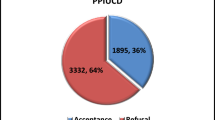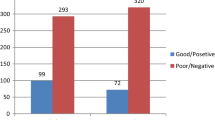Abstract
The National Family Planning Programme of India, since its inception in 1951, has been able to successfully achieve significant reductions in maternal mortality and fertility. Over the past decade, the need for contraception has changed dramatically in India. Couples no longer desire sterilization, but prefer modern reversible long-term methods of contraception. The ideal time to discuss contraception is in the antenatal period when there is a good rapport between the doctor and the patient. The window period when the patient is admitted in the hospital during delivery can be used effectively to offer postpartum contraception. It has been found that the highest chance of unwanted pregnancy is in the first year after delivery, when women do not report to the doctor if this window period is missed. Postpartum intrauterine contraceptive devices are ideal for a country like India and it can be used to cover the unmet need of contraception if inserted immediately after delivery. There are two types of insertion: post placental, within 10 min of delivery of placenta and postpartum, within 48 h of delivery. Although there is a greater chance of expulsion in the postpartum insertions, it can be significantly reduced with proper training and user experience. Postpartum IUCD should be routinely offered to all patients delivering in institutions to provide complete care to a parturient and to achieve safe motherhood.
Similar content being viewed by others
References
Pachouri S. Expanding contraceptive choice in India: issues and evidence. J Family Welfare 2004;50(special issue):13–25.
Kumar S, Sethi R, Balasubramaniam S, et al. Women’s experience with postpartum intrauterine device use in India. Reprod Health. 2014;11:32. doi:10.1186/1742-4755-11-32.
Grimes DA, Lopez LM, Schulz KF, et al. Immediate post-partum insertion of intrauterine devices. Cochrane Database of Syst Rev 2010;(5):Art. No.: CD003036. doi:10.1002/14651858.CD003036.pub2.
Nelson A. Gynaecology and obstetrics. In: Intrauterine contraceptives. Vol. 6. Philadelphia: Lippincott Williams and Wilkins; 2004.
Post-partum IUCD Reference Manual. New Delhi: Family Planning Division, Ministry of Health and Family Welfare, Government of India; 2010.
World Health Organization. Medical eligibility criteria for contraceptive use. 4th ed. Geneva: World Health Organization; 2010.
Immediate postpartum insertion of an IUD is safe and effective. Global Health Technical Briefs. 2007. USA: USAID (United States Agency for International Development and Family Health International); 2007. Lopez, Grimes, Szpir (Family Health International/CRTU Programme).
Conflict of interest
None.
Author information
Authors and Affiliations
Corresponding author
Additional information
Dr. Geetha Balsarkar is a Professor at Seth G.S. Medical College and Nowrosjee Wadia Maternity Hospital. Dr. Arun Nayak is a Professor at L.T.M. Medical College and Hospital, Sion, Mumbai.
Rights and permissions
About this article
Cite this article
Balsarkar, G.D., Nayak, A. Postpartum IUCD: Rediscovering a Languishing Innovation. J Obstet Gynecol India 65, 218–220 (2015). https://doi.org/10.1007/s13224-015-0753-2
Received:
Accepted:
Published:
Issue Date:
DOI: https://doi.org/10.1007/s13224-015-0753-2




